Abstract
1. The minimal doses (μmol/kg i.v.) of phenmetrazine, (±)-p-chloramphetamine, and aminorex which increase motor activity are 5·6, 3·5, and 1·5, respectively. We detected stereotype behaviour neither in rats receiving intravenous doses 3 times greater nor in animals injected intraperitoneally with 44, 62 and 112 μmol/kg of (±)-p-chloramphetamine, aminorex and phenmatrazine, respectively.
2. The latter doses of the three amphetamine congeners were tested for their action on tissue monoamine content. Only (±)-p-chloramphetamine decreased the concentration of tel-diencephalon 5-hydroxytryptamine (5-HT) and this decrease lasted longer than 24 hours. This and the other two amphetamine congeners failed to affect the concentration of noradrenaline (NA) in brain, heart and lung.
3. Aminorex (1·5 μmol/kg i.v.) and (±)-p-chloramphetamine (3·5 μmol/kg i.v.) decreased the turnover time of striatum dopamine (DM) but failed to change the turnover time of tel-diencephalon and brainstem NA. Phenmetrazine (5·6 μmol/kg i.v.) changed neither the turnover time of striatum DM nor that of NA in the two brain areas assayed.
Full text
PDF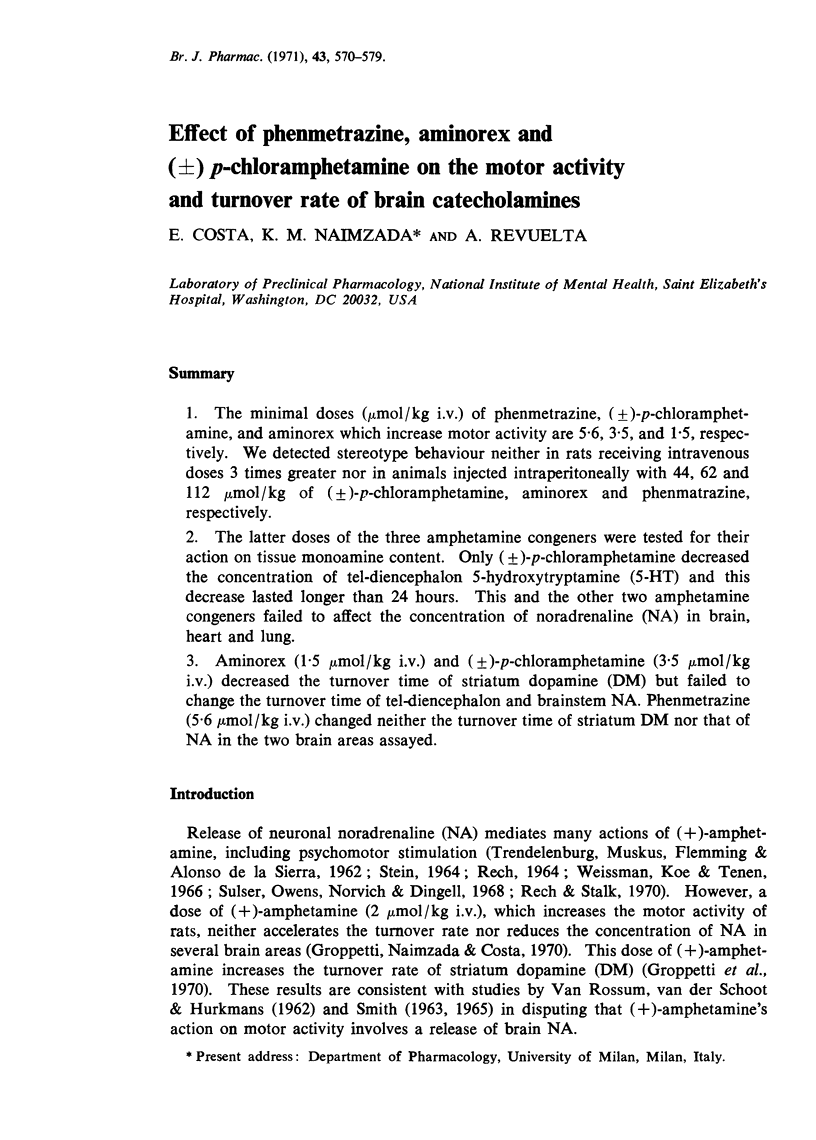
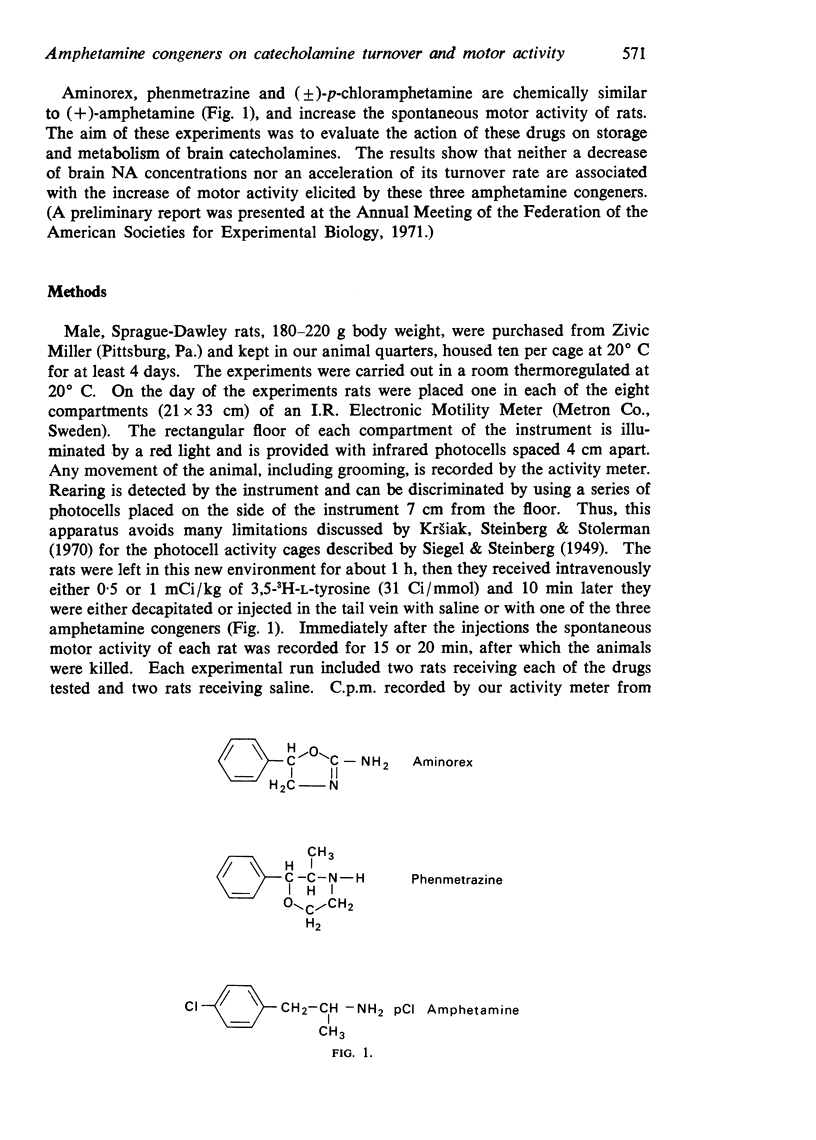
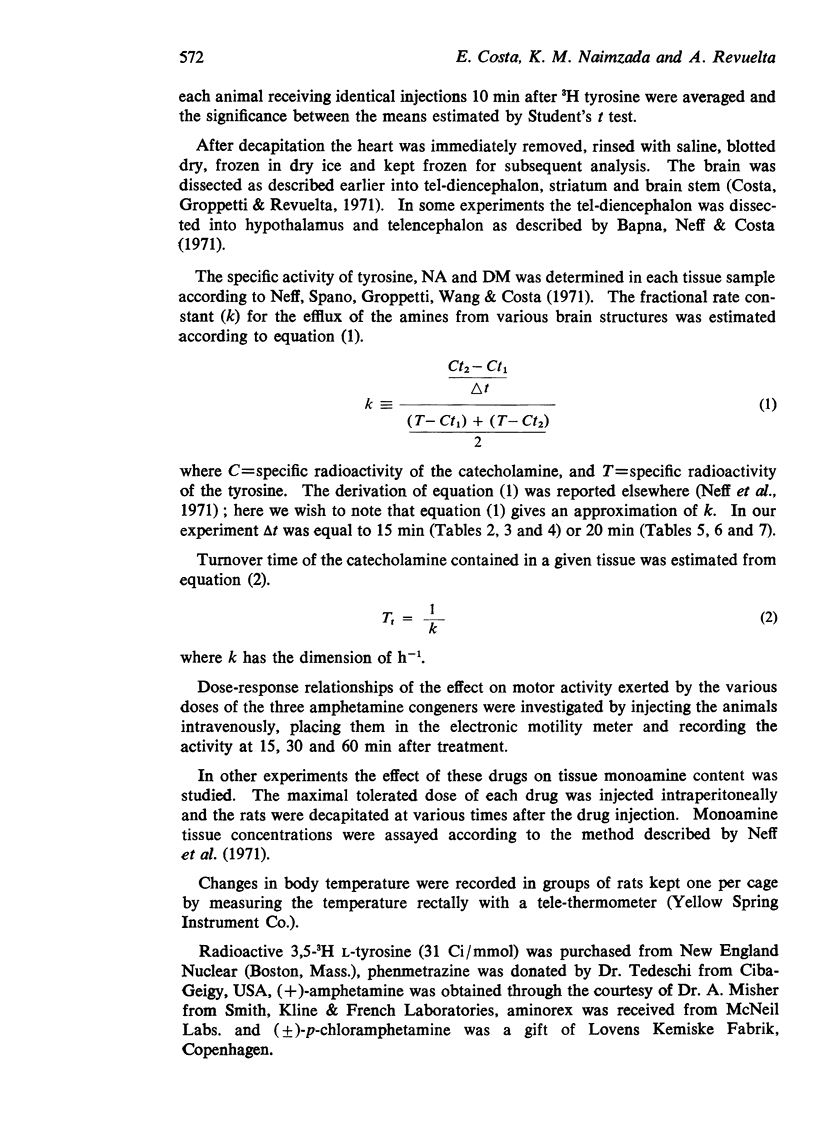
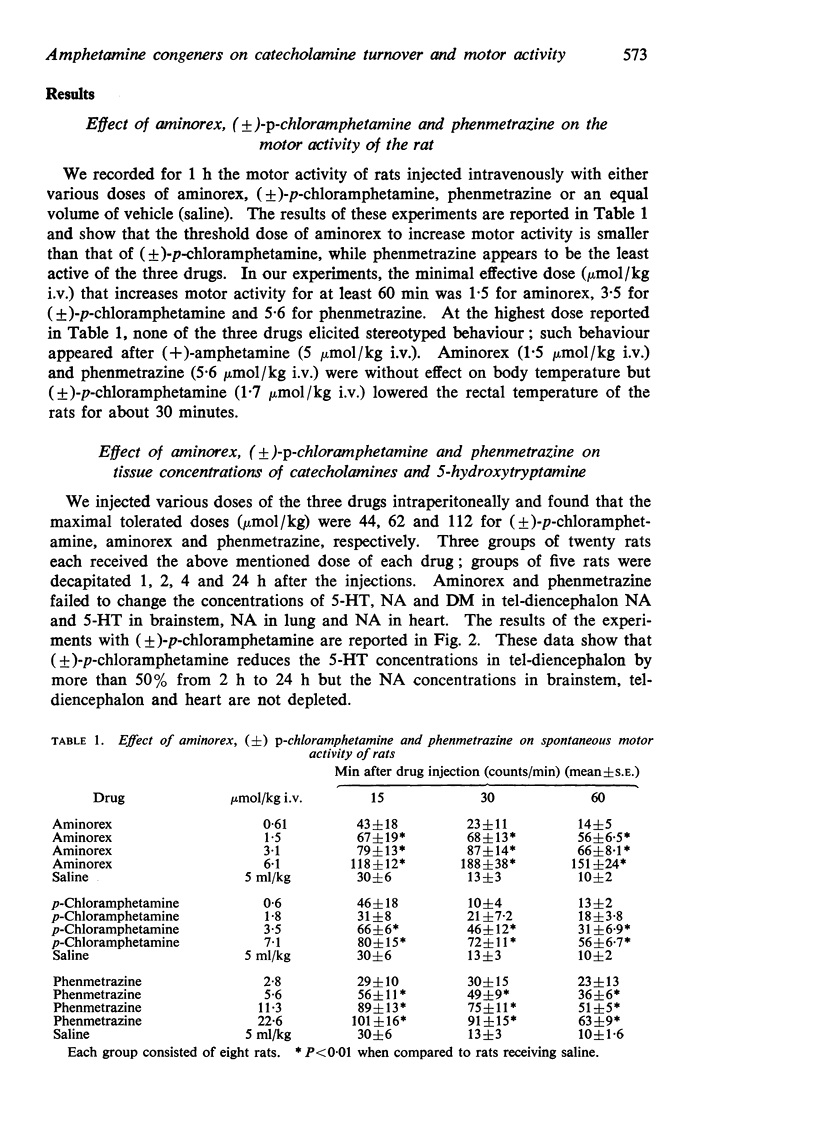
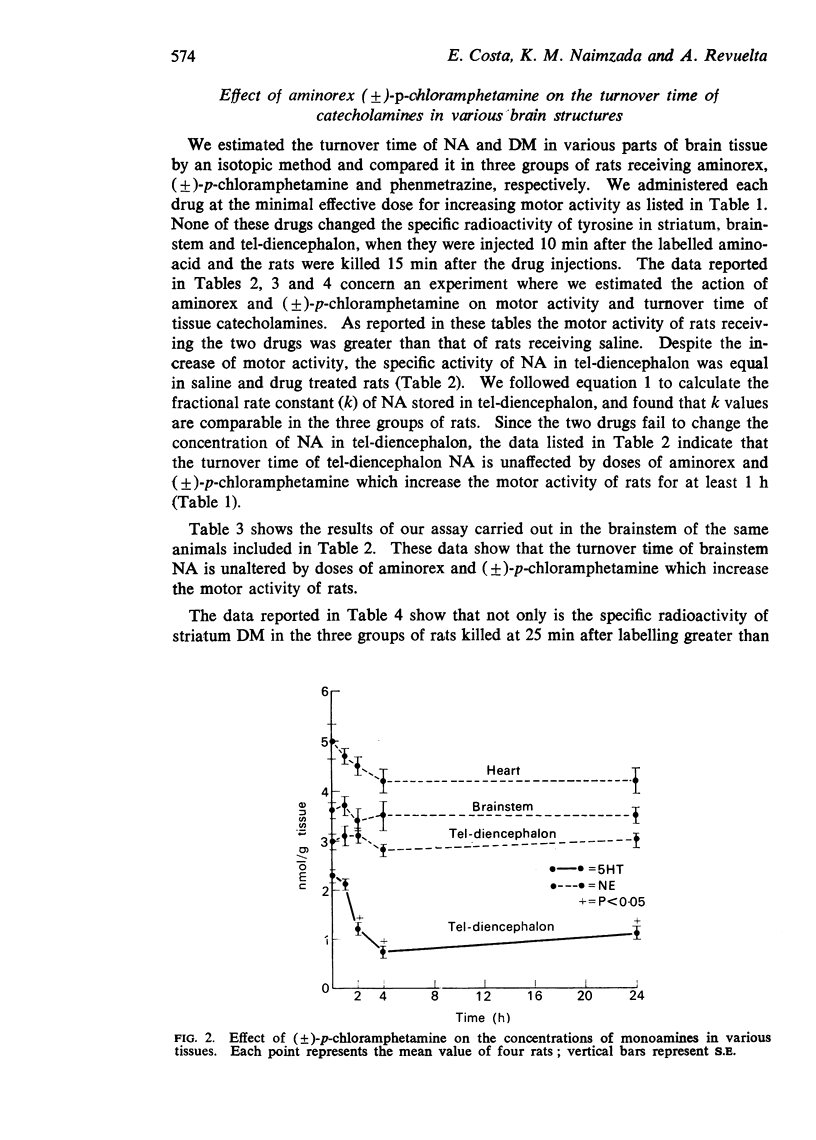
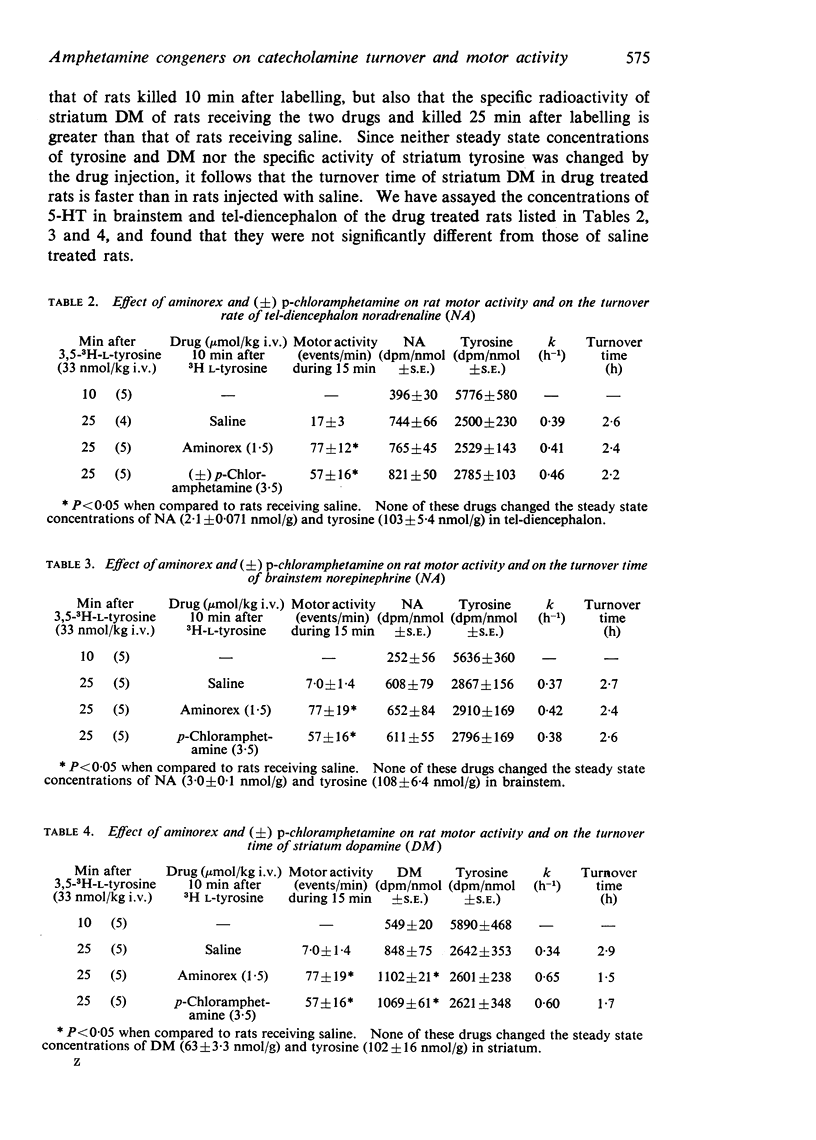
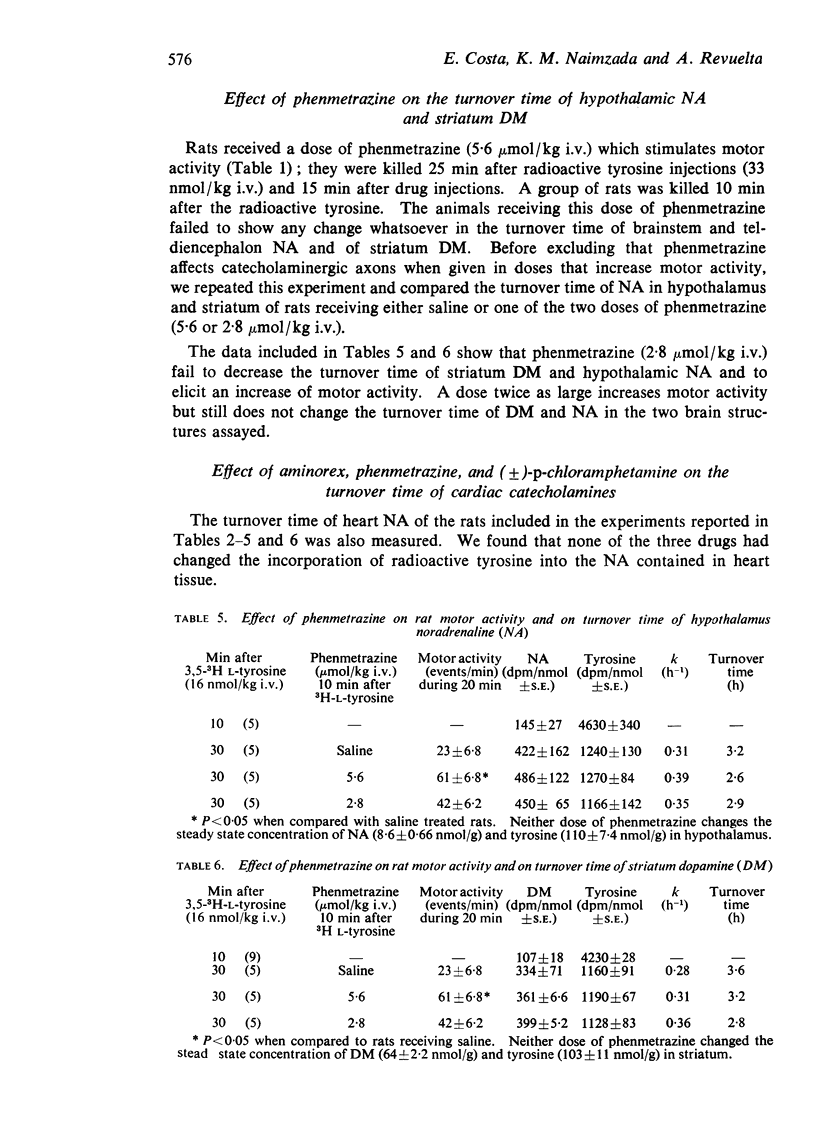
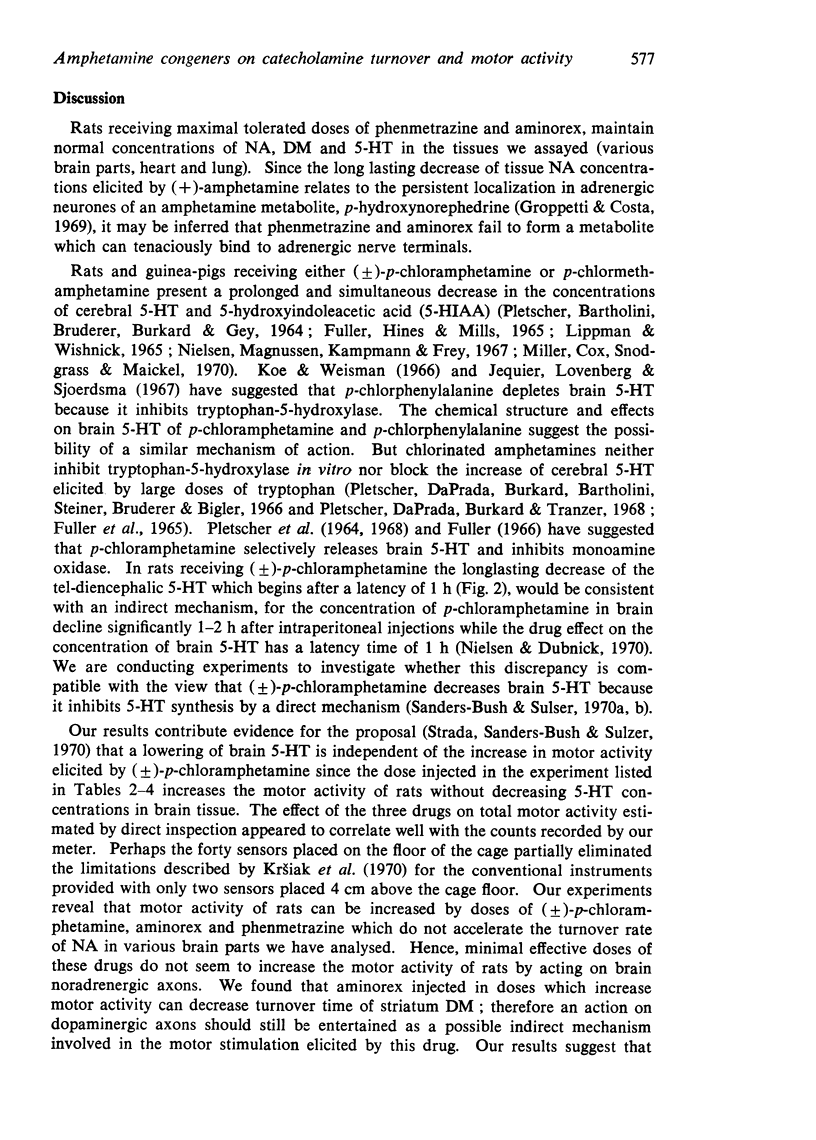
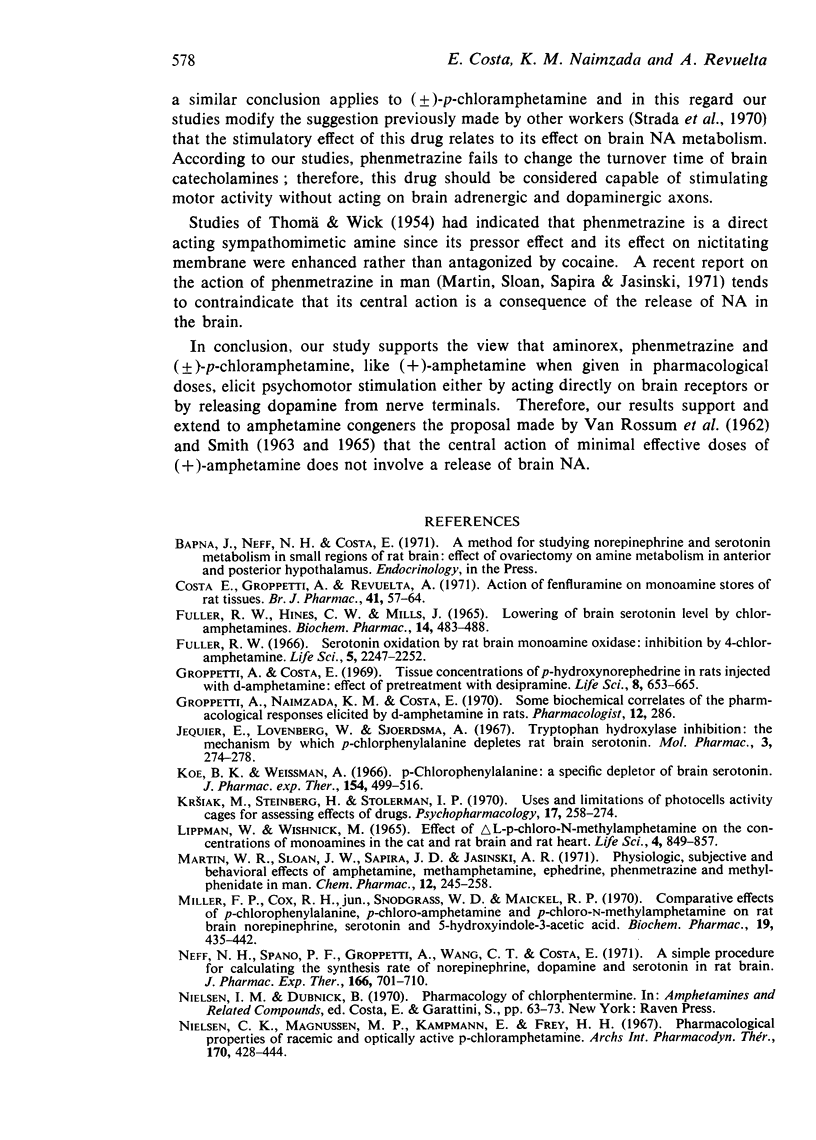
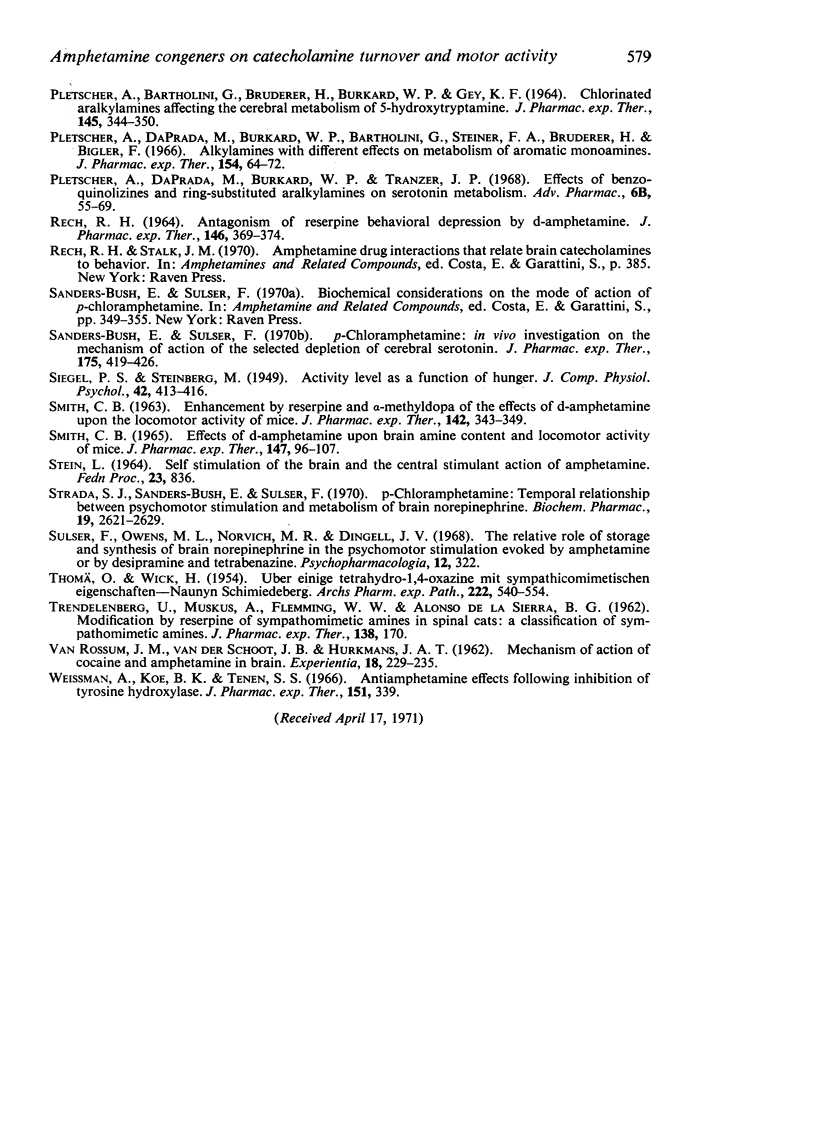
Selected References
These references are in PubMed. This may not be the complete list of references from this article.
- Costa E., Groppetti A., Revuelta A. Action of fenfluramine on monoamine stores of rat tissues. Br J Pharmacol. 1971 Jan;41(1):57–64. doi: 10.1111/j.1476-5381.1971.tb09935.x. [DOI] [PMC free article] [PubMed] [Google Scholar]
- FULLER R. W., HINES C. W., MILLS J. LOWERING OF BRAIN SEROTONIN LEVEL BY CHLORAMPHETAMINES. Biochem Pharmacol. 1965 Apr;14:483–488. doi: 10.1016/0006-2952(65)90221-2. [DOI] [PubMed] [Google Scholar]
- Groppetti A., Costa E. Tissue concentrations of p-hydroxynorephedrine in rats injected with d-amphetamine: effect of pretreatment with desipramine. Life Sci. 1969 Jun 1;8(11):653–665. doi: 10.1016/0024-3205(69)90027-7. [DOI] [PubMed] [Google Scholar]
- Jéquier E., Lovenberg W., Sjoerdsma A. Tryptophan hydroxylase inhibition: the mechanism by which p-chlorophenylalanine depletes rat brain serotonin. Mol Pharmacol. 1967 May;3(3):274–278. [PubMed] [Google Scholar]
- Koe B. K., Weissman A. p-Chlorophenylalanine: a specific depletor of brain serotonin. J Pharmacol Exp Ther. 1966 Dec;154(3):499–516. [PubMed] [Google Scholar]
- Krsiak M., Steinberg H., Stolerman I. P. Uses and limitations of photocell activity cages for assessing effects of drugs. Psychopharmacologia. 1970;17(3):258–274. doi: 10.1007/BF00402085. [DOI] [PubMed] [Google Scholar]
- LIPPMANN W., WISHNICK M. EFFECT OF DL-P-CHLORO-N-METHYLAMPHETAMINE ON THE CONCENTRATIONS OF MONOAMINES IN THE CAT AND RAT BRAIN AND RAT HEART. Life Sci. 1965 Apr;4:849–857. doi: 10.1016/0024-3205(65)90279-1. [DOI] [PubMed] [Google Scholar]
- Martin W. R., Sloan J. W., Sapira J. D., Jasinski D. R. Physiologic, subjective, and behavioral effects of amphetamine, methamphetamine, ephedrine, phenmetrazine, and methylphenidate in man. Clin Pharmacol Ther. 1971 Mar-Apr;12(2):245–258. doi: 10.1002/cpt1971122part1245. [DOI] [PubMed] [Google Scholar]
- Miller F. P., Cox R. H., Jr, Snodgrass W. R., Maickel R. P. Comparative effects of p-chloroamphetamine and p-chloro-N-methylamphetamine on rat brain norepinephrine, serotonin and 5-hydroxyindole-3-acetic acid. Biochem Pharmacol. 1970 Feb;19(2):435–442. doi: 10.1016/0006-2952(70)90199-1. [DOI] [PubMed] [Google Scholar]
- Neff N. H., Spano P. F., Groppetti A., Wang C. T., Costa E. A simple procedure for calculating the synthesis rate of norepinephrine, dopamine and serotonin in rat brain. J Pharmacol Exp Ther. 1971 Mar;176(3):701–710. [PubMed] [Google Scholar]
- Nielsen C. K., Magnussen M. P., Kampmann E., Frey H. H. Pharmacological properties of racemic and optically active p-chloroamphetamine. Arch Int Pharmacodyn Ther. 1967 Dec;170(2):428–442. [PubMed] [Google Scholar]
- PLETSCHER A., BARTHOLINI G., BRUDERER H., BURKARD W. P., GEY K. F. CHLORINATED ARYLALKYLAMINES AFFECTING THE CEREBRAL METABOLISM OF 5-HYDROXYTRYPTAMINE. J Pharmacol Exp Ther. 1964 Sep;145:344–350. [PubMed] [Google Scholar]
- Pletscher A., Da Prada M., Burkard W. P., Bartholini G., Steiner F. A., Bruderer H., Bigler F. Aralkylamines with different effects on the metabolism of aromatic monoamines. J Pharmacol Exp Ther. 1966 Oct;154(1):64–72. [PubMed] [Google Scholar]
- Pletscher A., Da Prada M., Burkard W. P., Tranzer J. P. Effects of benzoquinolizines and ring-substituted aralkylamines on serotonin metabolism. Adv Pharmacol. 1968;6(Pt B):55–69. doi: 10.1016/s1054-3589(08)60295-1. [DOI] [PubMed] [Google Scholar]
- RECH R. H. ANTAGONISM OF RESERPINE BEHAVIORAL DEPRESSION BY D-AMPHETAMINE. J Pharmacol Exp Ther. 1964 Dec;146:369–376. [PubMed] [Google Scholar]
- SMITH C. B. EFFECTS OF D-AMPHETAMINE UPON BRAIN AMINE CONTENT AND LOCOMOTOR ACTIVITY OF MICE. J Pharmacol Exp Ther. 1965 Jan;147:96–102. [PubMed] [Google Scholar]
- SMITH C. B. ENHANCEMENT BY RESERPINE AND ALPHA-METHYL DOPA OF THE EFFECTS OF D-AMPHETAMINE UPON THE LOCOMOTOR ACTIVITY OF MICE. J Pharmacol Exp Ther. 1963 Dec;142:343–350. [PubMed] [Google Scholar]
- STEIN L. SELF-STIMULATION OF THE BRAIN AND THE CENTRAL STIMULANT ACTION OF AMPHETAMINE. Fed Proc. 1964 Jul-Aug;23:836–850. [PubMed] [Google Scholar]
- Sanders-Bush E., Sulser F. P-chloroamphetamine: in vivo investigations on the mechanism of action of the selective depletion of cerebral serotonin. J Pharmacol Exp Ther. 1970 Nov;175(2):419–426. [PubMed] [Google Scholar]
- Strada S. J., Sanders-Bush E., Sulser F. p-Chloroamphetamine. Temporal relationship between psychomotor stimulation and metabolism of brain norepinephrine. Biochem Pharmacol. 1970 Sep;19(9):2621–2629. doi: 10.1016/0006-2952(70)90012-2. [DOI] [PubMed] [Google Scholar]
- Sulser F., Owens M. L., Norvich M. R., Dingell J. V. The relative role of storage and synthesis of brain norepinephrine in the psychomotor stimulation evoked by amphetamine or by desipramine and tetrabenazine. Psychopharmacologia. 1968;12(4):322–332. doi: 10.1007/BF00401410. [DOI] [PubMed] [Google Scholar]
- THOMA O., WICK H. Uber einige Tetrahydro-1,4-oxazine mit sympathicomimetischen Eigenschaften. Naunyn Schmiedebergs Arch Exp Pathol Pharmakol. 1954;222(6):540–554. [PubMed] [Google Scholar]
- TRENDELENBURG U., MUSKUS A., FLEMING W. W., GOMEZ ALONSO de la SIERRA B. Modification by reserpine of the action of sympathomimetic amines in spinal cats; a classification of sympathomimetic amines. J Pharmacol Exp Ther. 1962 Nov;138:170–180. [PubMed] [Google Scholar]
- Weissman A., Koe B. K., Tenen S. S. Antiamphetamine effects following inhibition of tyrosine hydroxylase. J Pharmacol Exp Ther. 1966 Mar;151(3):339–352. [PubMed] [Google Scholar]
- van ROSSUM J., van der SCHOOT J., HURKMANS J. A. Mechanism of action of cocaine and amphetamine in the brain. Experientia. 1962 May 15;18:229–231. doi: 10.1007/BF02148316. [DOI] [PubMed] [Google Scholar]


